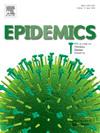Onset of infectiousness explains differences in transmissibility across Mycobacterium tuberculosis lineages
IF 2.4
3区 医学
Q2 INFECTIOUS DISEASES
引用次数: 0
Abstract
Mycobacterium tuberculosis complex (MTBC) lineages show substantial variability in virulence, but the epidemiological consequences of this variability have not been studied in detail. Here, we aimed for a lineage-specific epidemiological characterization by applying phylodynamic models to genomic data from different countries, representing the most abundant MTBC lineages. Our results suggest that all lineages are associated with similar durations and levels of infectiousness, resulting in similar reproductive numbers. However, L1 and L6 are associated with a delayed onset of infectiousness, leading to longer periods between subsequent transmission events. Together, our findings highlight the role of MTBC genetic diversity in tuberculosis disease progression and transmission.
传染性的发作解释了结核分枝杆菌谱系间传播性的差异。
结核分枝杆菌复合体(MTBC)菌系在毒力方面表现出很大的变异性,但这种变异性对流行病学的影响尚未得到详细研究。在此,我们将系统动力学模型应用于来自不同国家的基因组数据,以代表最丰富的 MTBC 品系,从而对该品系的特定流行病学特征进行分析。我们的结果表明,所有品系都具有相似的感染持续时间和水平,从而导致相似的繁殖数量。然而,L1 和 L6 的传染性起始时间较晚,导致后续传播事件之间的间隔时间较长。总之,我们的研究结果凸显了 MTBC 遗传多样性在结核病进展和传播中的作用。
本文章由计算机程序翻译,如有差异,请以英文原文为准。
求助全文
约1分钟内获得全文
求助全文
来源期刊

Epidemics
INFECTIOUS DISEASES-
CiteScore
6.00
自引率
7.90%
发文量
92
审稿时长
140 days
期刊介绍:
Epidemics publishes papers on infectious disease dynamics in the broadest sense. Its scope covers both within-host dynamics of infectious agents and dynamics at the population level, particularly the interaction between the two. Areas of emphasis include: spread, transmission, persistence, implications and population dynamics of infectious diseases; population and public health as well as policy aspects of control and prevention; dynamics at the individual level; interaction with the environment, ecology and evolution of infectious diseases, as well as population genetics of infectious agents.
 求助内容:
求助内容: 应助结果提醒方式:
应助结果提醒方式:


